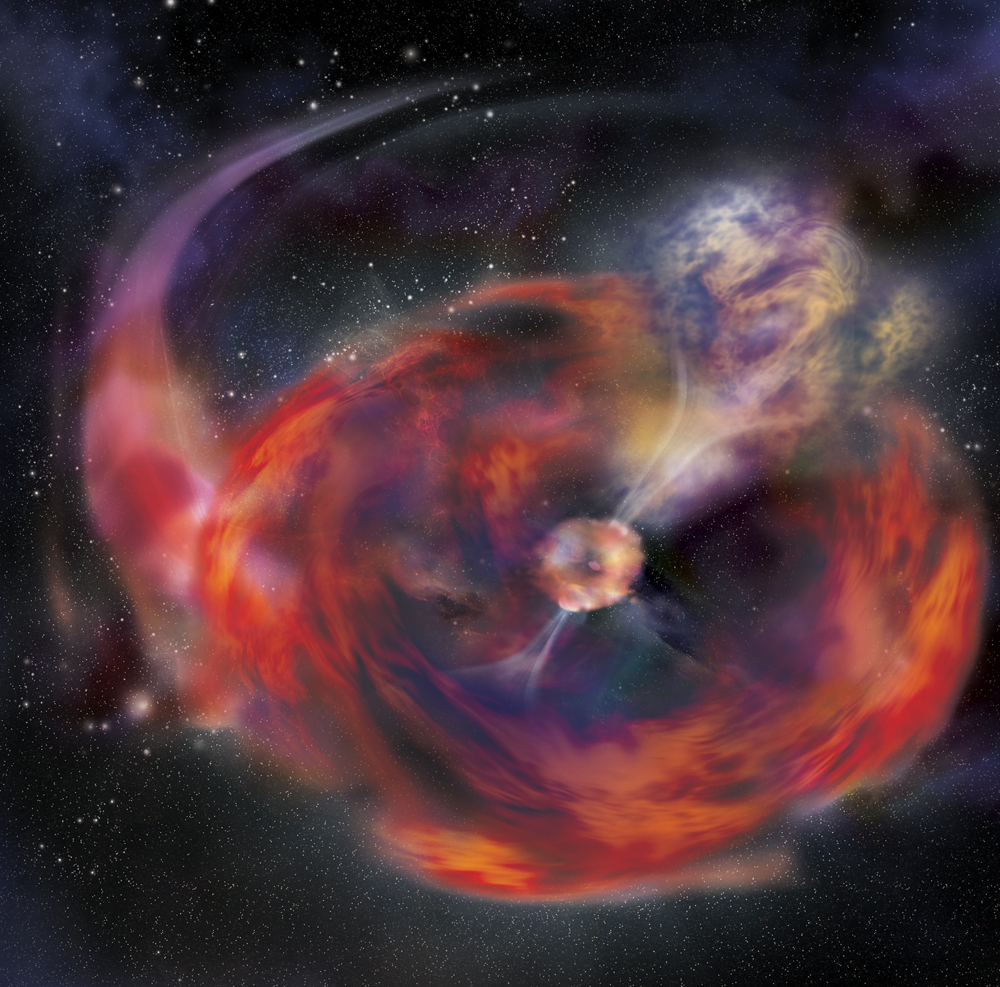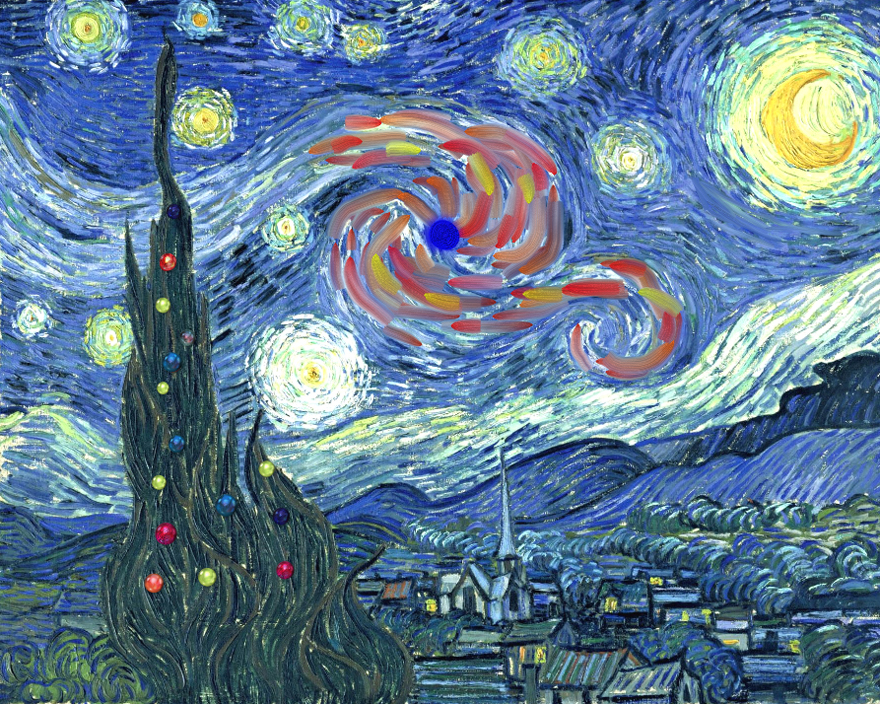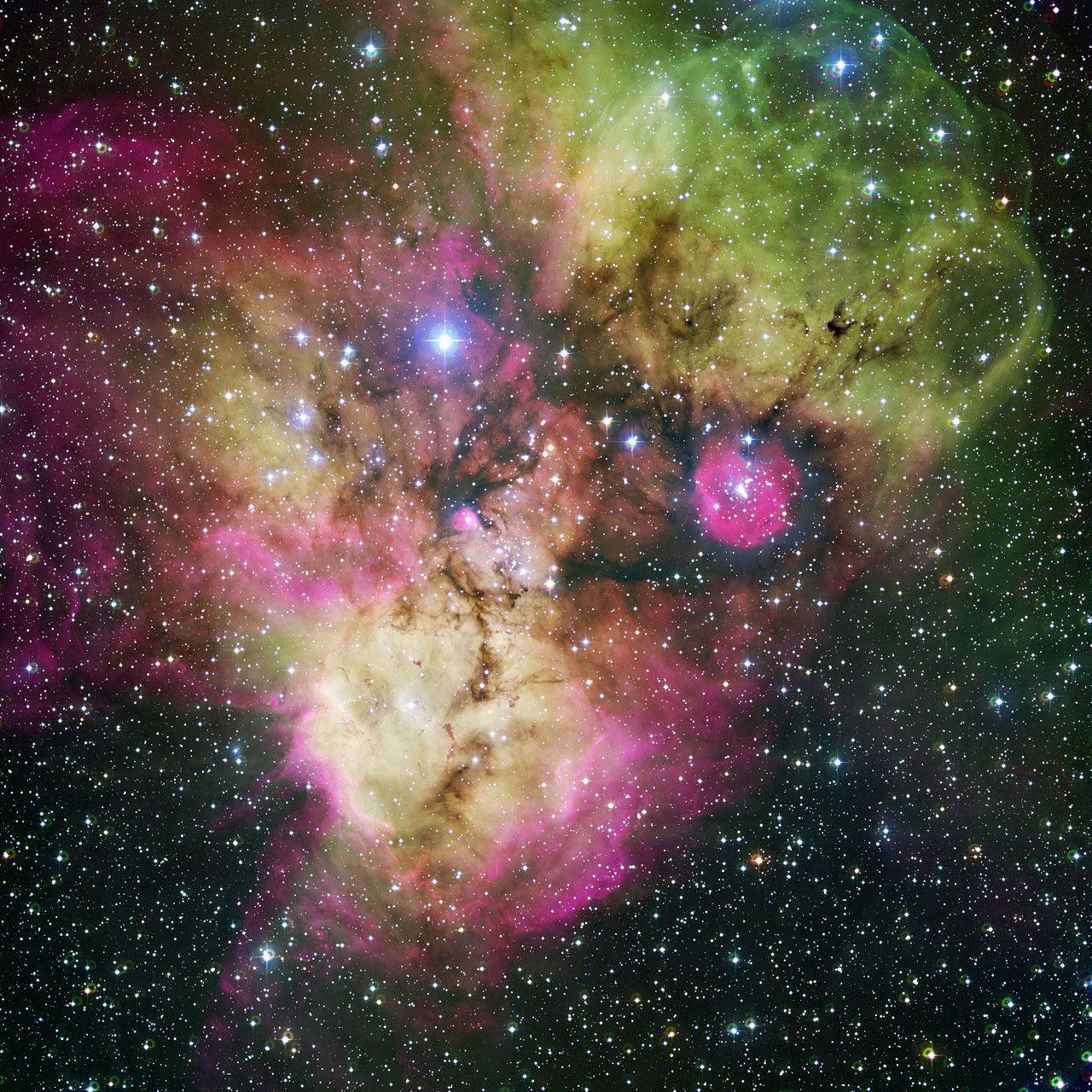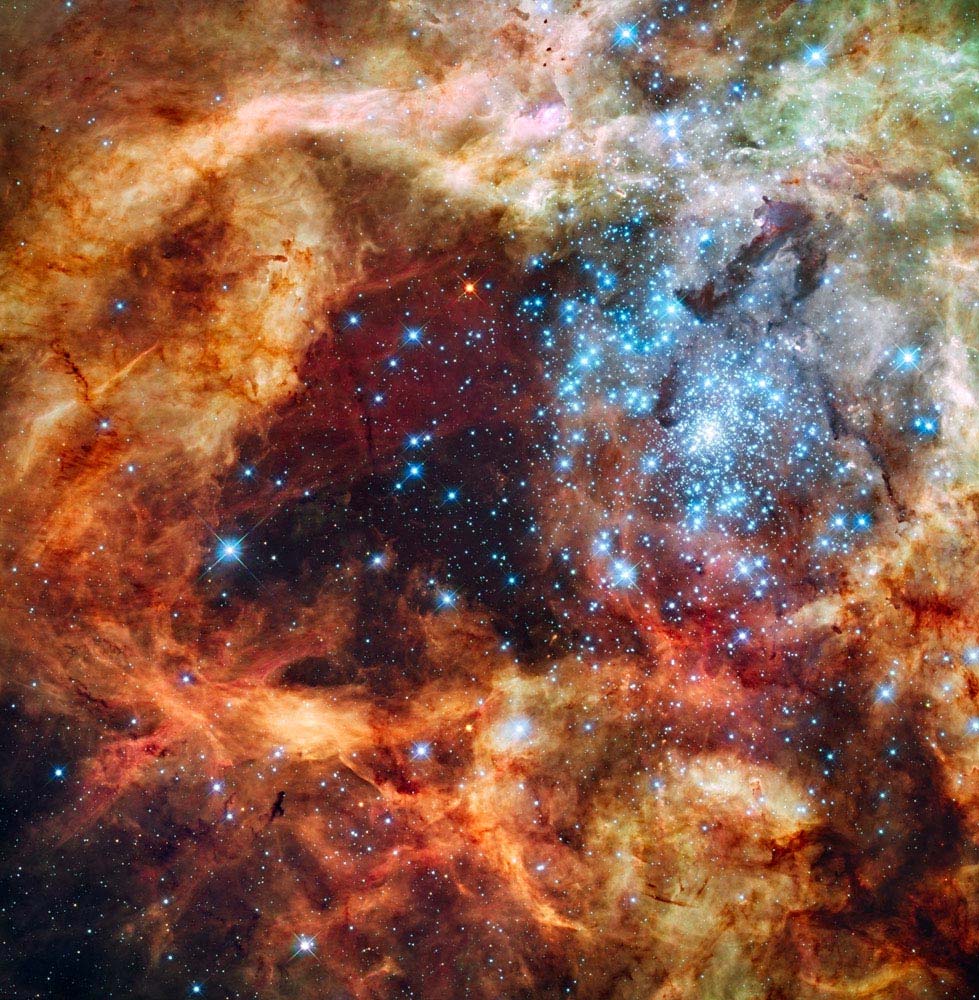Space Christmas: Festive Photos of Cosmic Beauty
GRB 101225A: The Christmas Burst

Artist's impression of the model suggested for GRB 101225A, the "Christmas Burst" of December 2010.
Christmas Burst in the Style of Vincent van Gogh

The Christmas burst of 2010 as it might have been painted by Vincent van Gogh.
A Cosmic Christmas Ghost

Just like Charles Dickens' Christmas Carol takes us on a journey into past, present and future in the time of only one Christmas Eve, two of ESO' s telescopes captured various stages in the life of a star in a single image.
This image from telescopes at the European Southern Observatory in Chile shows a vast stellar cluster surrounded by gas that resembles a vast cosmic ghost. The image, released on Dec. 25, 2005, hows the area surrounding the stellar cluster NGC 2467, This image from telescopes at the European Southern Observatory in Chile shows a vast stellar cluster surrounded by gas that resembles a vast cosmic ghost. The image, released on Dec. 25, 2005, hows the area surrounding the stellar cluster NGC 2467, located in the southern constellation of Puppis ("The Stern").
Star Explosion Shines Like Christmas Ornament In Hubble Photo
![NASA, ESA, and the Hubble Heritage Team (STScI/AURA). Acknowledgment: J. Hughes (Rutgers University) [Full Story]](https://cdn.mos.cms.futurecdn.net/kDc8cMg9aRgYNVw22iUF9V.jpg)
A delicate sphere of gas, photographed by NASA's Hubble Space Telescope, floats serenely in the depths of space. Called SNR 0509-67.5, the bubble is the visible remnant of a powerful stellar explosion in the Large Magellanic Cloud, a small galaxy about 160,000 light-years from Earth.
Snowflake Cluster and Cone Nebula

Strange shapes and textures can be found in the neighborhood of the Cone Nebula. These patterns result from the tumultuous unrest that accompanies the formation of the open cluster of stars known as NGC 2264, the Snowflake Cluster. To better understand this process, a detailed image of this region was taken in two colors of infrared light by the orbiting Spitzer Space Telescope.
A Christmas Wreath

This Hubble photo of 30 Doradus was taken Oct. 20-27, 2009. The blue color is light from the hottest, most massive stars; the green from the glow of oxygen; and the red from fluorescing hydrogen.
Get the Space.com Newsletter
Breaking space news, the latest updates on rocket launches, skywatching events and more!
Join our Space Forums to keep talking space on the latest missions, night sky and more! And if you have a news tip, correction or comment, let us know at: community@space.com.

Space.com is the premier source of space exploration, innovation and astronomy news, chronicling (and celebrating) humanity's ongoing expansion across the final frontier. Originally founded in 1999, Space.com is, and always has been, the passion of writers and editors who are space fans and also trained journalists. Our current news team consists of Editor-in-Chief Tariq Malik; Editor Hanneke Weitering, Senior Space Writer Mike Wall; Senior Writer Meghan Bartels; Senior Writer Chelsea Gohd, Senior Writer Tereza Pultarova and Staff Writer Alexander Cox, focusing on e-commerce. Senior Producer Steve Spaleta oversees our space videos, with Diana Whitcroft as our Social Media Editor.









